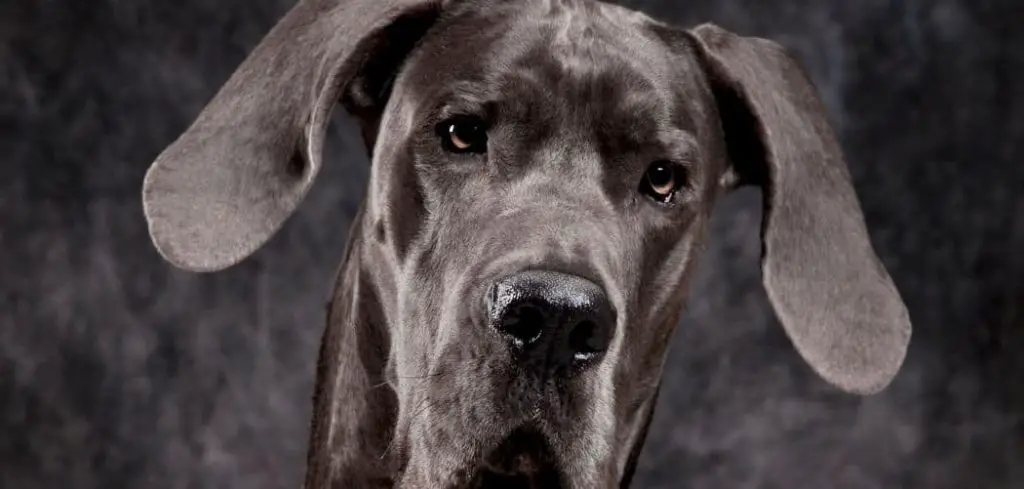A dog that suddenly starts gagging and loses interest in food can leave any pet parent feeling anxious. While occasional gagging isn’t always serious, when it’s paired with not eating, it could signal an underlying health issue.
We outline the common causes of dog gagging and not eating, what you can do at home, and when to seek veterinary help.
Dog Gagging and Not Eating — Why It Happens
When your dog is gagging and not eating, it could be due to throat irritation, something stuck in the mouth or esophagus, kennel cough, gastrointestinal issues, or even a more serious condition like bloat or respiratory infection.
These symptoms together often indicate discomfort or obstruction and should be evaluated by a vet promptly.

Common Causes of Dog Gagging and Not Eating
1. Throat Obstruction or Foreign Body
Dogs are curious by nature and may accidentally swallow items that become lodged in the throat — such as bones, sticks, or toys.
This often causes immediate gagging, retching, pawing at the mouth, and refusal to eat due to discomfort.
What to do:
If you suspect something is stuck, open your dog’s mouth carefully to look.
Do not reach in blindly — you could push the object further.
Seek emergency vet help if gagging persists.
2. Kennel Cough or Upper Respiratory Infection
Kennel cough is highly contagious among dogs, especially in places like dog parks or boarding facilities.
It causes a dry, honking cough that may sound like gagging. Dogs with this condition often feel unwell and refuse food.
What to do:
Isolate your dog from others.
Offer soft, moist foods to encourage eating.
Visit your vet for diagnosis and treatment (usually antibiotics or cough suppressants).
3. Nausea or GI Upset
Nausea can lead to both gagging and appetite loss
Dogs can gag from an upset stomach, acid reflux, or conditions like pancreatitis. You may also see lip licking, drooling, or pacing in addition to not eating.
What to do:
Withhold food for 12–24 hours, then try bland food (boiled chicken and rice).
If vomiting or gagging continues, visit your vet.
4. Dental or Mouth Pain
Oral pain can cause gagging when chewing
Dogs with infected teeth, sore gums, or oral tumors may gag while trying to eat or shortly after. You might also notice bad breath, drooling, or pawing at the mouth.
What to do:
Examine your dog’s mouth (if safe) for signs of inflammation or odor.
Switch to soft food temporarily.
Book a dental check-up with your vet.
5. Megaesophagus
A structural issue that leads to regurgitation
Megaesophagus is a condition where the esophagus becomes enlarged and can’t push food into the stomach. Affected dogs gag, regurgitate undigested food, and may lose weight.
What to do:
Feed in an elevated position (Bailey chair).
Use a vet-prescribed feeding plan.
Diagnostic imaging is needed for confirmation.
6. Heart Disease
Fluid buildup from heart issues can cause gagging.
Dogs with congestive heart failure may cough or gag due to fluid in the lungs or pressure on the trachea. They often show lethargy, difficulty breathing, and loss of appetite.
What to do:
Monitor for rapid breathing or fatigue.
Schedule a vet exam for x-rays and heart function tests.
7. Tracheal Collapse (Especially in Small Breeds)
Gagging sounds like a goose honk
Small breeds like Yorkies and Pomeranians are prone to tracheal collapse. This causes frequent gagging, honking sounds, and difficulty eating when excited or after exercise.
What to do:
Avoid collars (use a harness).
Reduce excitement and weight gain.
Your vet may prescribe medication or recommend surgery in severe cases.
Related: Dog guarding food and not eating (What it means)
Related: Dog smelly farts and not eating (Here’s why)
What You Can Do at Home
Keep your dog calm and quiet. Stress worsens gagging.
Check the mouth for visible obstructions, wounds, or swelling.
Offer bland, easy-to-swallow food like baby food (no garlic/onion) or boiled chicken.
Elevate your dog’s food bowls if megaesophagus is suspected.
Hydration is key. Offer ice cubes or broth if your dog isn’t drinking.
When to See the Vet
Call your vet if:
Gagging persists for more than 24 hours
There’s no interest in food for 24+ hours
Your dog is lethargic, drooling excessively, or vomiting
You hear honking, wheezing, or labored breathing
You notice pale gums or signs of pain
Key Takeaway
Dog gagging and not eating isn’t something to ignore — it could be as simple as nausea or as serious as a lodged object or heart condition.
Monitoring your dog closely and knowing when to involve the vet can make a big difference in their recovery.
